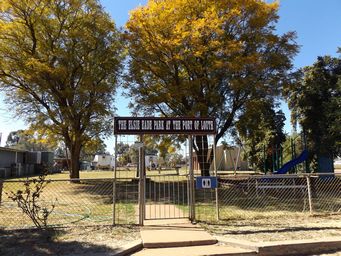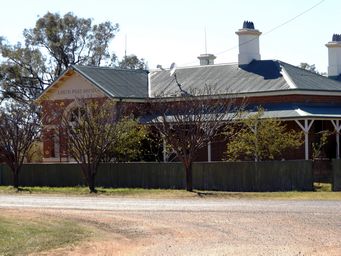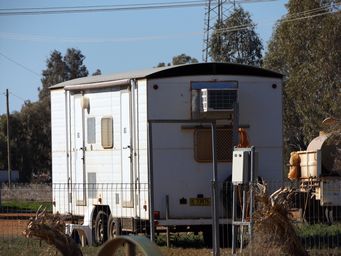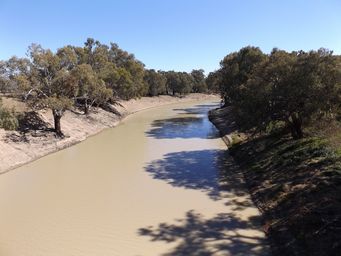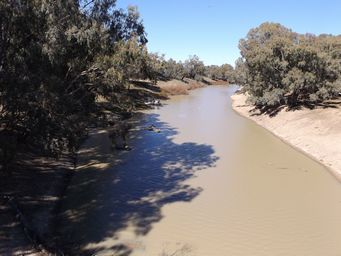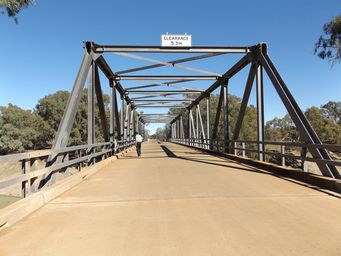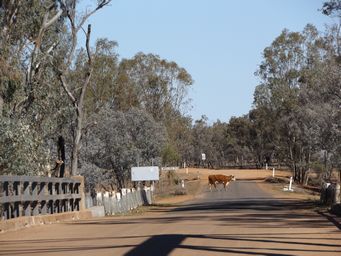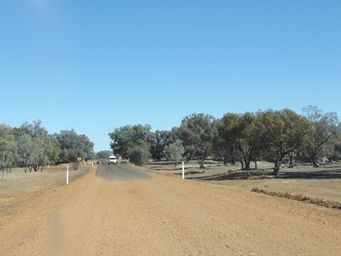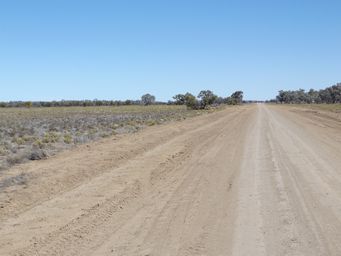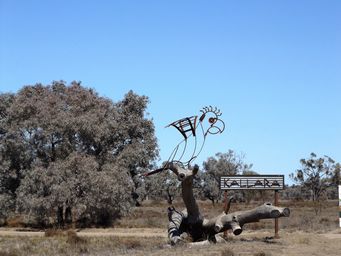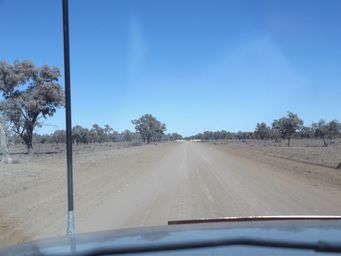Above right is the bridge crossing the Darling River. This bridge was constructed in 1965, prior to which a punt ferried passengers, freight and livestock across the river.
We looked way down to the Darling River which had low levels (above).
As we came over the bridge to the north west side
of the river, a fearless cow ambled across the road (at right).
Leaving Louth we crossed river into Weelong Road which
links to Toorale Road coming from the north east and becomes known as the Tilpa – Louth Road at this point.
New South Wales - Darling River Run - Louth
Australia So Much to See
The present day Dunlop Station is the
881 hectare homestead block of the former station which, which a century ago, encompassed 400,000 hectares (one million acres), including
Toorale and Nocoleche stations, owned by Sir Samuel McCaughey and his brothers. Today, Dunlop station is owned by the Chandler
family, who are working to preserve and restore the property to its original state. The original 45 stand woolshed, where the
first full-scale machine shearing of 184,000 sheep in 1888 took place was last used for a station shearing in 1993 and is still standing. With camping and shearers quarters accommodation, tours are conducted through the old homestead and shearing shed.
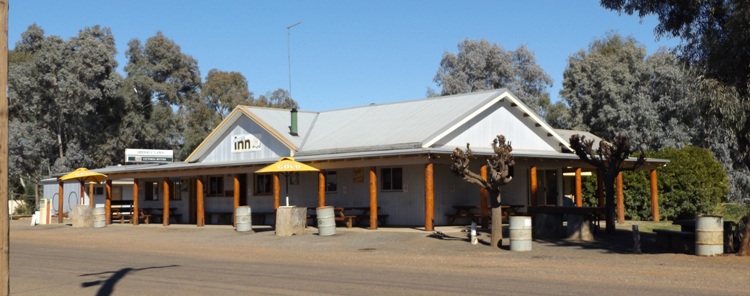
Major Thomas Mitchell was the first explorer in the Louth area in 1835, on his second expedition. He was following and instruction
from the Governor to meet the Darling River near Bourke and follow it downstream to see it if joined the Murray River near present
day Wentworth.
The port established at Louth was critical to the pastoral empire of Samuel McCaughey. His empire
was comprised of Toorale and Dunlop Stations, covering two million acres and shearing half a million sheep. These sheds were
the first to use electric shears.
Wool was loaded onto paddle steamers at Louth. Copper transported from Cobar was
also shipped downstream from Louth.
Louth town was established in 1859 when Thomas Matthews built a pub to cater for the
river traders and other visitors. T.A. Matthews named the town Louth after the village where he was born in County Louth, Ireland.
Louth was also a Cobb and Co stop, and Matthew’s son Charlie was a Cobb and Co driver.
